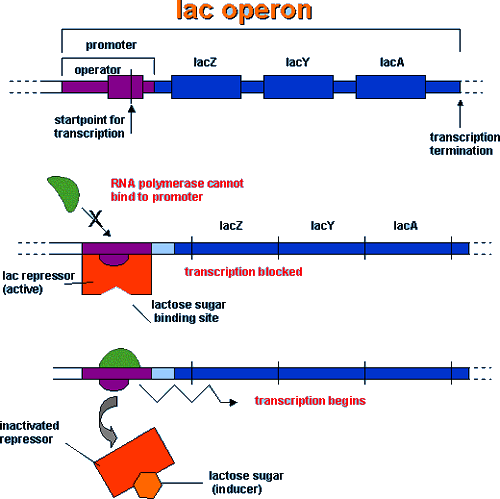The genes of the Lac Operon are responsible for breaking down the sugar Lactose from the environment the bacteria may be in and converting it into usable sugars for cell respiration.
Expression of the genes of the lac operon is determined by the presence or absence of Lactose.
Molecules involved:
Operator - part of the promoter. short sequence to which the repressor binds to inhibit transcription by RNA Polymerase. This binding is what stops the RNA Polymerase from binding to the rest of the promoter.
Promoter - Where RNA Polymerase binds to begin transcription after removal of the repressor protein
Repressor - protein that is bound to the operator in the absence of the sugar lactose. When lactose is present, it binds to the repressor and removes it from the operator. This allows the RNA Polymerase to bind to the promoter to begin transcription
Lactose - sugar involved in this operon. Binds to the repressor to remove it from the operon, to allow for transcription of the 3 genes that are involved in allowing the bacteria to use lactose for energy.
Lac Z, Y, A - 3 genes involved in the process of importing and breaking down of lactose for energy. One gene is involved makes the transport protein to increase the amount of lactose within the cell (from it's ENVIRONMENT!). The other genes are involved in the breakdown of lactose into smaller sugars.
This video (to 5:00) is a good explanation of the lac operon
So now can you answer the questions below?
1. What are the molecules involved in the lac operon?
2. Describe the steps of gene expression of the lac operon?
3. How does this relate to our question of the term?

No comments:
Post a Comment